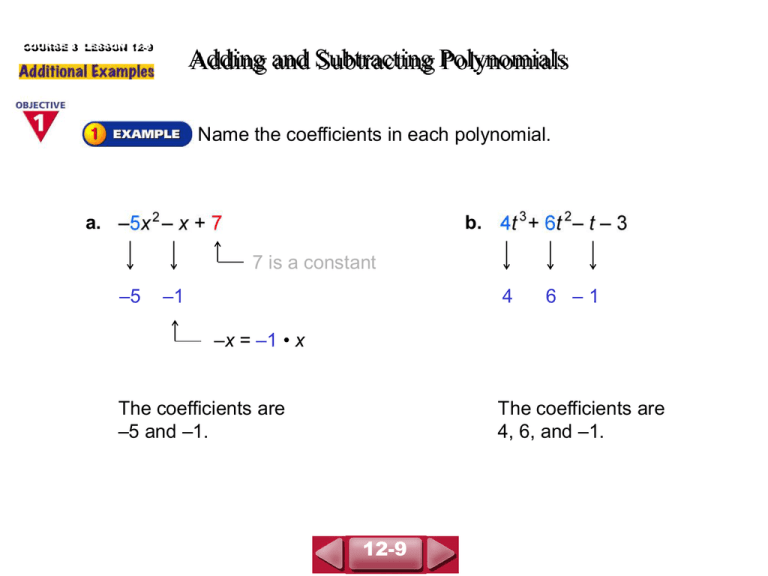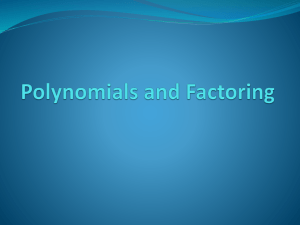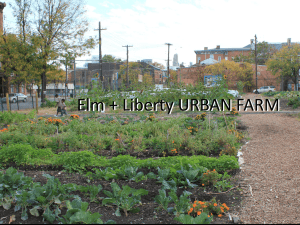Adding and Subtracting Polynomials(12
advertisement

COURSE 3 LESSON 12-9 Adding and Subtracting Polynomials Name the coefficients in each polynomial. a. b. 7 is a constant –5 –1 4 6 –1 –x = –1 • x The coefficients are –5 and –1. The coefficients are 4, 6, and –1. 12-9 COURSE 3 LESSON 12-9 Adding and Subtracting Polynomials Add: (5p2 + 2p + 7) + (2p2 – p – 5). Method 1 Add using tiles. 12-9 COURSE 3 LESSON 12-9 Adding and Subtracting Polynomials (continued) Method 2 Add using properties. (5p2 + 2p + 7) + (2p2 – p – 5) = (5p2 + 2p2) + (2p – p) + (7 – 5) Group like terms. = (5 + 2)p2 + (2 – 1)p + (7 – 5) Use the Distributive Property. = 7p2 + p + 2 Simplify. Check Check the solution in Example 2 by substituting 1 for p. (5p2 + 2p + 7) + (2p2 – p – 5) (5 • 12 + 2 • 1 + 7) + (2 • 12 – 1 – 5) (5 + 2 + 7) + (2 – 1 – 5) 7p2 + p + 2 (7 • 12 + 1 + 2) Substitute 1 for p. (7 + 1 + 2) Multiply. 10 = 10 12-9 Add. COURSE 3 LESSON 12-9 Adding and Subtracting Polynomials A garden has sides of 3x + 5, 4x – 2, 5x + 2, and 7x – 6. Write a polynomial to express the length of edging that is needed to go around the garden. To find the perimeter of the garden, find the sum of the four sides. perimeter = (3x + 5) + (4x – 2) + (5x + 2) + (7x – 6) = (3x + 4x + 5x + 7x) + (5 – 2 + 2 – 6) Group like terms. = 19x – 1 Add the coefficients. The perimeter of the garden is (19x – 1). The edging must be (19x – 1) units long to go around the garden. 12-9









